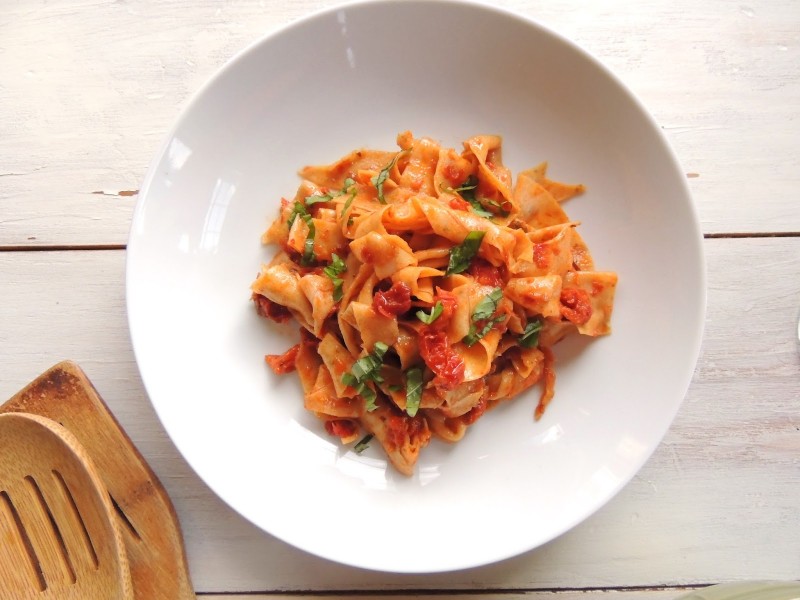
Pasta is a beloved dish enjoyed by people around the world. While it's readily available in stores, making your own homemade pasta can be a rewarding and delightful experience. The process may seem intimidating, but with the right guidance, you can create delicious pasta from scratch in your own kitchen. In this article, we will walk you through the step-by-step process of making homemade pasta, exploring various types of pasta, and offering tips to ensure your pasta-making journey is a success.
There's something special about homemade pasta. The taste and texture are incomparable to store-bought varieties. While it might seem daunting, making pasta from scratch is a skill that anyone can master with a little practice. Plus, it's a fun activity for family and friends to enjoy together.
Gathering the Ingredients and Equipment
To begin your pasta-making adventure, you'll need some basic ingredients and equipment. The primary ingredients include all-purpose flour, eggs, and salt. You'll also need a rolling pin or a pasta machine, a mixing bowl, and a clean working surface. Having a pasta drying rack is helpful but not essential.
Choosing the Right Flour
The type of flour you use will greatly impact the texture and flavor of your pasta. While all-purpose flour works well, you can experiment with different flours like semolina or 00 flour for a unique taste and texture. Each flour has its distinct qualities, so don't hesitate to try a few and find what you prefer.
Preparing the Pasta Dough
In a large mixing bowl, combine the flour and a pinch of salt. Create a well in the center and crack the eggs into it. Gently whisk the eggs with a fork, gradually incorporating the flour until a dough starts to form. Then, use your hands to bring the mixture together into a ball of dough.
Kneading the Dough
Kneading the dough is crucial to develop its elasticity and structure. Flour a clean surface and transfer the dough onto it. Push the dough away from you with the heel of your hand, then fold it back over itself. Turn the dough a quarter turn and repeat the process. Continue kneading for about 10 minutes until the dough becomes smooth and supple.
Letting the Dough Rest
Allow the kneaded dough to rest for at least 30 minutes. Cover it with a clean cloth or plastic wrap to prevent it from drying out. Resting the dough relaxes the gluten, making it easier to roll out later.
Rolling Out the Dough
Now comes the fun part – rolling out the dough. Divide the rested dough into smaller portions and flatten each with your hands. Set your pasta machine to the thickest setting and pass the dough through it. Gradually decrease the thickness settings until you achieve the desired thickness for your pasta.
Cutting the Pasta
Once your dough is rolled out, you can cut it into various shapes. For classic pasta, try fettuccine or tagliatelle. If you're feeling adventurous, experiment with shapes like farfalle or orecchiette. You can also use a ravioli stamp to make stuffed pasta.
Cooking the Pasta
Bring a pot of salted water to a rolling boil and carefully add your freshly made pasta. Cook it for 2-3 minutes or until al dente. Fresh pasta cooks much faster than dried pasta, so keep an eye on it to avoid overcooking.
Making Stuffed Pasta
Stuffed pasta, like ravioli or tortellini, adds a delightful surprise to your pasta dishes. To make stuffed pasta, place small portions of filling onto one sheet of pasta, leaving space between each mound. Brush water around the filling to help seal the edges, then place another sheet of pasta on top. Press around the filling to remove any air pockets and cut out the individual pieces.
Creating Flavored Pasta
Infuse your pasta with exciting flavors by adding ingredients like spinach, beetroot, or squid ink to the dough. These colorful additions not only look stunning but also enhance the taste of your pasta dishes.
Serving and Sauces
Homemade pasta shines when served with simple and delicious sauces. A classic marinara sauce, a creamy Alfredo, or a rich carbonara complements the taste and texture of fresh pasta. Remember to toss your cooked pasta with the sauce immediately before serving to coat it evenly.
Common Pasta-Making Mistakes to Avoid
While making pasta is a delightful process, there are some common pitfalls to be aware of. Avoid overworking the dough, using too much flour, or not letting the dough rest. Additionally, don't skip the step of kneading, as it directly affects the pasta's texture.
Tips and Tricks for Perfect Pasta
To take your pasta-making to the next level, consider these tips:
Making homemade pasta is a delightful culinary experience that brings joy to both the maker and the eater. With some basic ingredients, the right technique, and a bit of practice, you can create delicious and unique pasta dishes that will impress your family and friends.
How to Create a Stunning Charcuterie Board
How to Prepare Healthy and Kid-Friendly Meals
10 Vegetables to Avoid During Rainy Season for a Healthy Diet